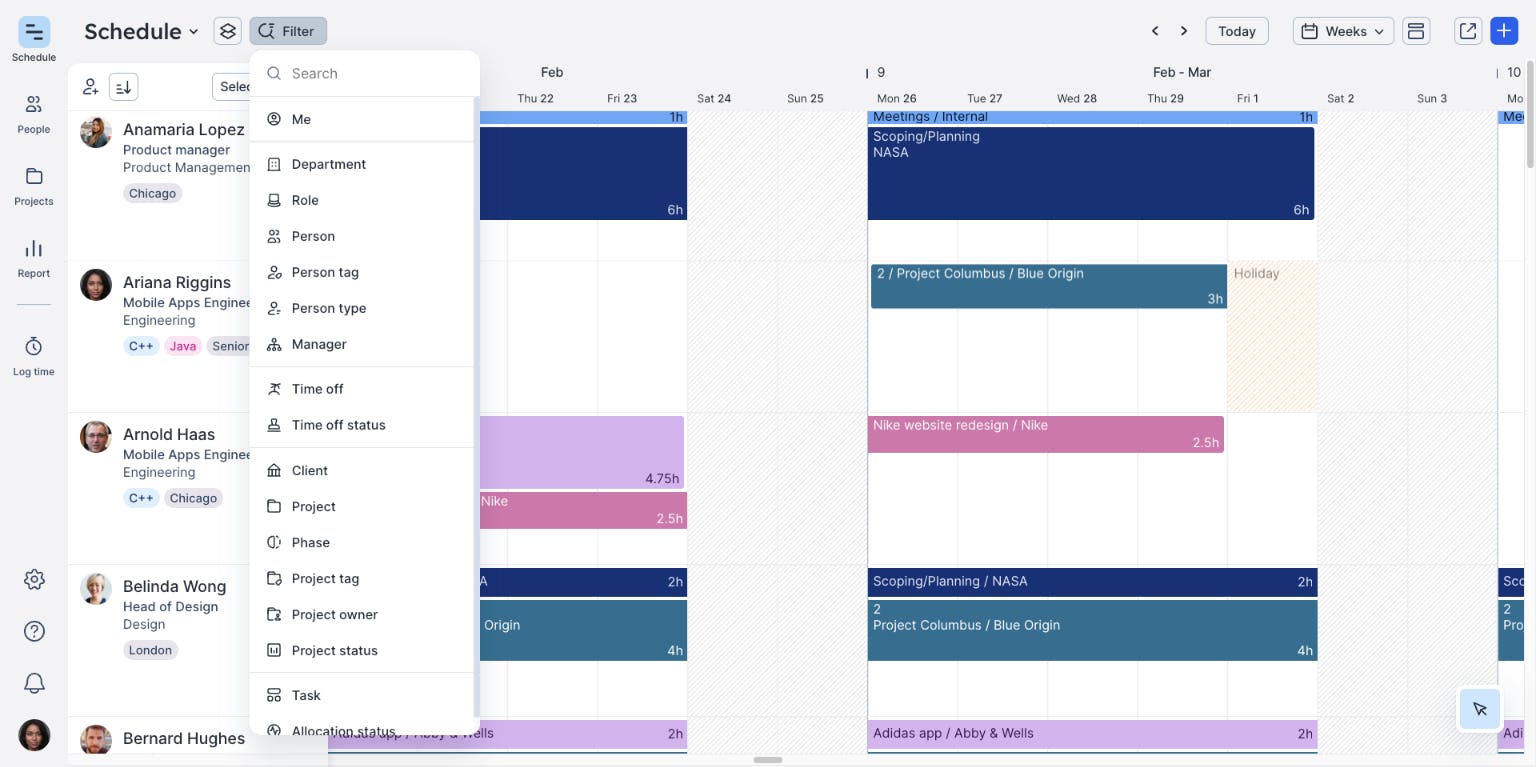How novu used Float post-merger to plan for a new 50-person team
novu is a digital agency based in Switzerland that builds software, websites, e-commerce stores, games, and apps. Their team is spread across 3 offices in Bern, Basel, and Zurich, and they develop everything locally in Switzerland.
The team at novu has one goal for every project they take on: to make the world a little more digital and simpler.
Even though novu was acquired by jkweb in 2022, both agencies continued to operate with the novu branding. As a result, novu’s team size more than doubled from about 20 to around 50 people. As they scaled their new agency, they switched to Float to handle the resourcing needs of their growing team.

novu’s custom tool wasn’t right for the new team size
After the merger, the new novu team had to choose the tools they’d use moving forward. GitHub or GitLab? Figma or Adobe XD? And what about people planning tools to manage and organize the new team?
At first, they decided to stick with the custom solution jkweb had been using.
But Pascal Josephy, Founder of jkweb and Managing Director at novu, soon realized that what was sufficient as a resourcing tool for 30 people did not meet the needs of a team that had doubled in size.
Our custom tool had significant disadvantages in terms of usability. There was no drag and drop. There was no way to filter people quickly. There was no way to get the project view. It was fine when we were about 30 people, but it was not usable after the merger when we reached 50.

Float helps keep resource planning simple
Before the acquisition, the smaller novu team had used Float for resource planning. So Pascal re-assessed our resource management software and found it a good fit for everyone.
They were not disappointed: resource planning in Float took much less effort compared to before.
Everybody had a better experience because planning became a lot easier.
An added bonus was that Float gave novu a lot of extra flexibility when planning projects and scheduling people—including scheduling work with time percentages instead of allocating a specific number of hours on any given day.
Now, if a project requires a team member’s time for a day overall, they allocate 20% of that person’s week to the task to prevent scheduling conflicts and accommodate customer delays.
Float is really flexible. You can block out half or a certain number of days if somebody only works Monday to Thursday. It works for people working 80%, whether over four or five days. You can actually plan for every scenario we have in our agency.
novu effortlessly manages 50 people with Float
With Float, resource planning for a team of 50 doesn’t feel like a pain anymore.
Over the past two years, Float has helped Pascal and his team to:
Quickly see people’s availability
In the past, if Pascal needed to replace a team member who was out sick quickly, he had to remove and add entries in their old system manually.
Now, with Float, Pascal can simply move tasks to another person’s schedule with a quick drag and drop, which saves him a lot of time.

Make strategic business decisions
Float also helps Pascal easily decide what projects to take on. When a prospective client reaches out for a project, Pascal uses the filter function to find out if there are available team members with the right skills to work on it. This kind of visibility into people’s long-term availability helps him decide whether the agency has the capacity to take on the project.

Keep track of in-progress work
Since novu works with a wide range of clients and projects change monthly, Pascal needs to keep track of what’s happening and who’s working on what.
With Float, it’s easy for him to see ongoing projects and team assignments at a glance and spot projects missing a key team member. Pascal uses this overview to catch any mistakes or gaps in planning.

Easily sync project data across multiple tools
Float’s API has been key in collecting and syncing data on projects and team performance across the different tools in novu’s stack.
The API was necessary for us to build on Float. We are about 50 people, so it’s really important that we don’t have to enter the data because otherwise, we would have to do it in five different systems. We do it once, and then it syncs with all our services.
Every team member is now a planner
One benefit Pascal was not expecting was that everyone at the agency would actively participate in resource planning.
Because Float is accessible, team members can see and adjust their schedules. This flexibility comes in handy frequently as team members often have to lend a hand to others on a project that is not scheduled in Float.
The process is simple. They add the task to Float, specifying what amount of time they’d spend on it to ensure everyone is informed and to prevent them from overworking.
We are happy with Float.

